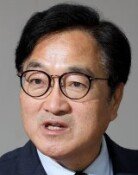U.S. Movement of Forces to Japan Draws Attention
U.S. Movement of Forces to Japan Draws Attention
Posted April. 21, 2004 20:43,
The U.S. government has decided to move the headquarters of its First Army, which is currently stationed in western Washington State, to Japan. It has also appointed a full general as its commander, reported Sankei Shimbun on April 21, quoting the remarks of a source in the U.S. Defense Department. This movement of the United States can be interpreted as a part of its plan to assign the First Army to take full charge of the whole East-Asia region.
Because the rank of the commander of U.S. forces in Korea, which is currently at the level of full general, seems to be lowered because of this decision, whether or not the headquarters of U.S. forces in Korea will be reduced or closed altogether has stirred criticism.
According to the source in the U.S., when the Defense Department suggested moving the headquarters of the First Army to Jama Camp near Tokyo to the Japanese government, they consented to appoint a full general to take charge of this headquarters. Right now, the rank of the First Army commander is designated at the lieutenant general level, and the seat of the U.S. army commander in Japan has been entrusted to a major general so far.
Because the seat of commander of USARPAC is currently entrusted to a lieutenant general, who is also in charge of all U.S. forces in Japan, the newly created seat of full general in the Asia-Pacific region will rank second in the region with the full general in Korea.
Considering the precedent that a full general of the U.S. army will take charge as the combined forces commander in a command system that divides the world in terms of major regions, this measure seems to be closely connected with the re-organization plan of U.S. forces overseas that is being driven by the George W. Bush administration, reported the newspaper.
In order to make preparations for a reduction of U.S. forces in Korea, it will establish a brand-new U.S. army headquarters at Jama Camp, which will control the military operations of the U.S. army in the areas such as the Korean peninsula, Taiwan Straits, and Southeast Asia.
The First Army consists of the First Special Warfare Force, the 2nd Infantry Division, and the 1st Brigade, and emergency operations are considered its major duty in the Asia-Pacific region. Asahi Shimbun also reported that the U.S. is considering dispatching an early missile warning system, which can detect the launch of ICBMs to Japan. Because the dispatch of missile radars for the protection of the U.S. mainland to Japan runs counter to the fundamental principle of the U.S-Japan mutual defensive agreement, refutations of this are expected in the near future.
Won-Jae Park parkwj@donga.com







